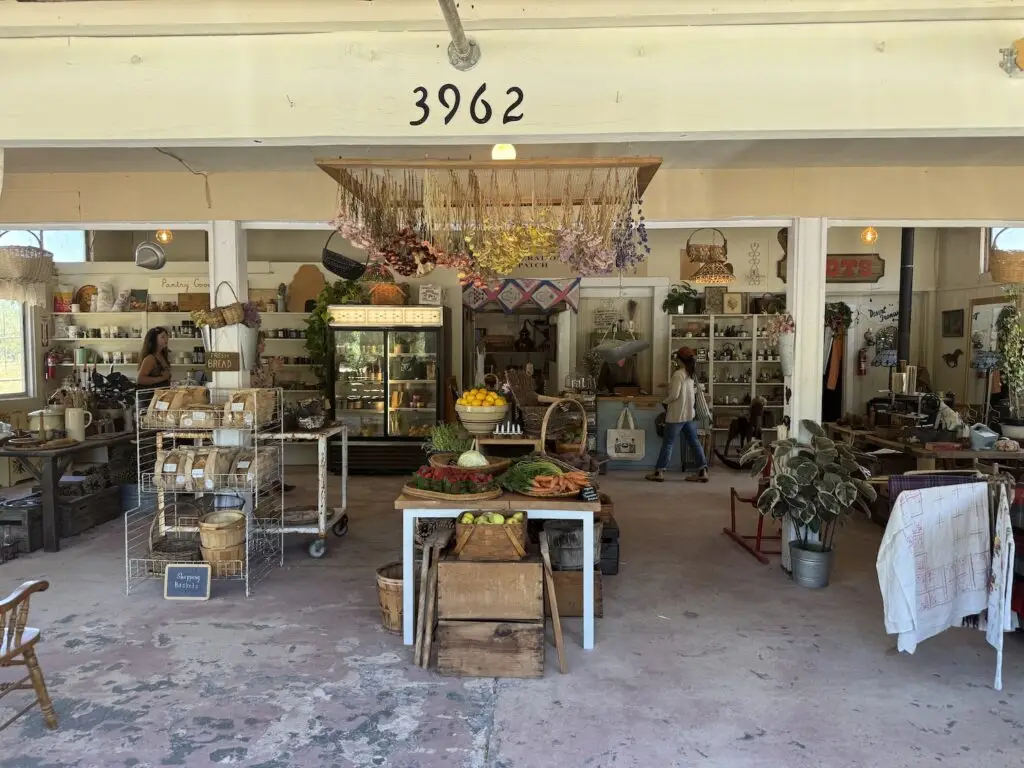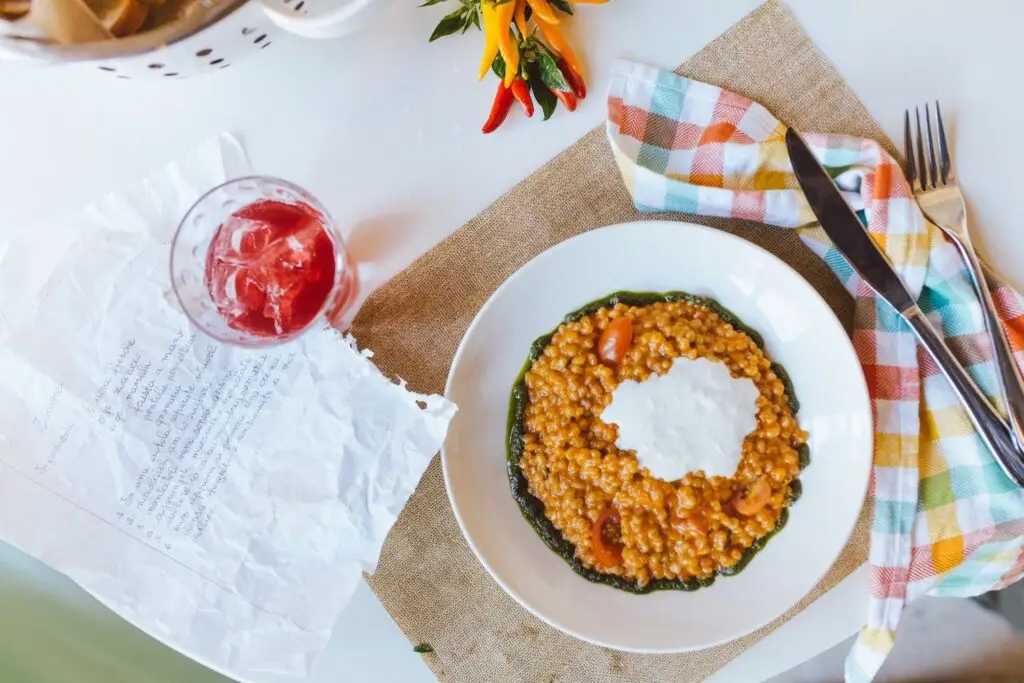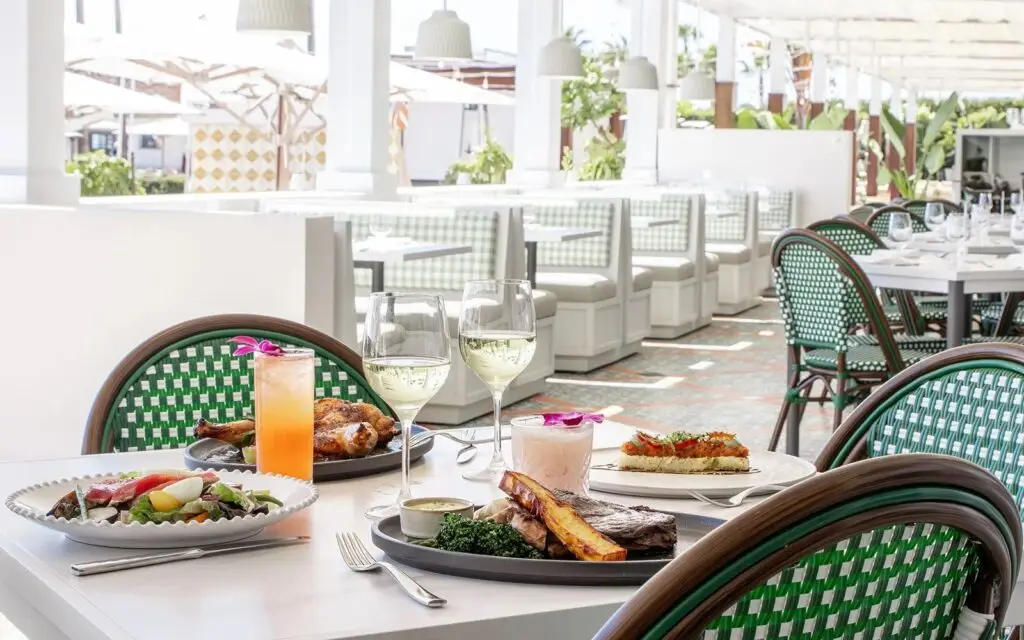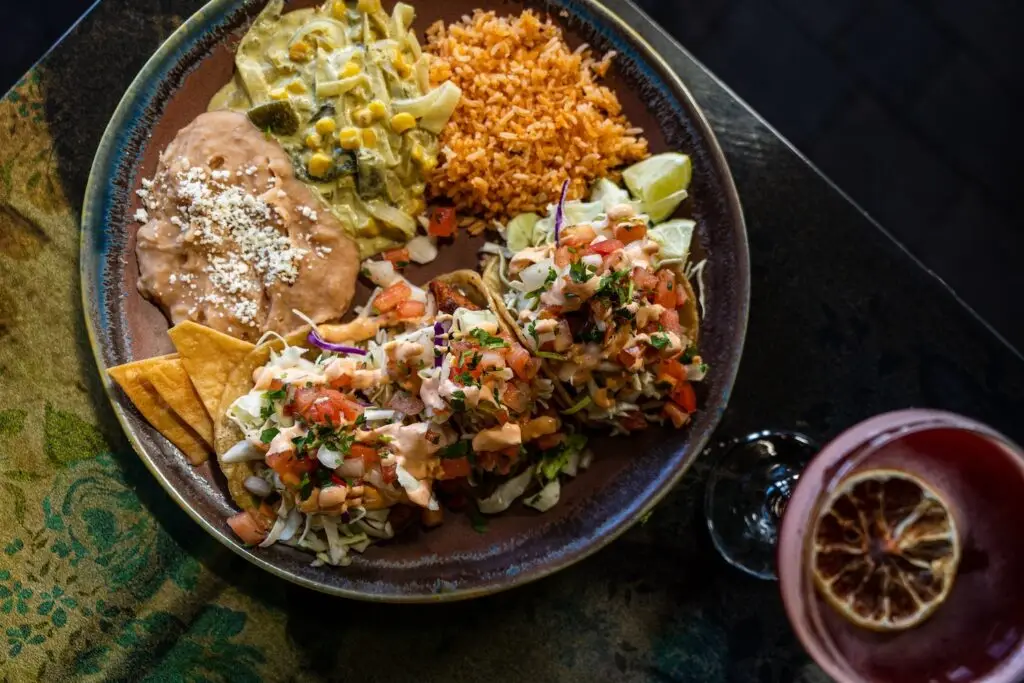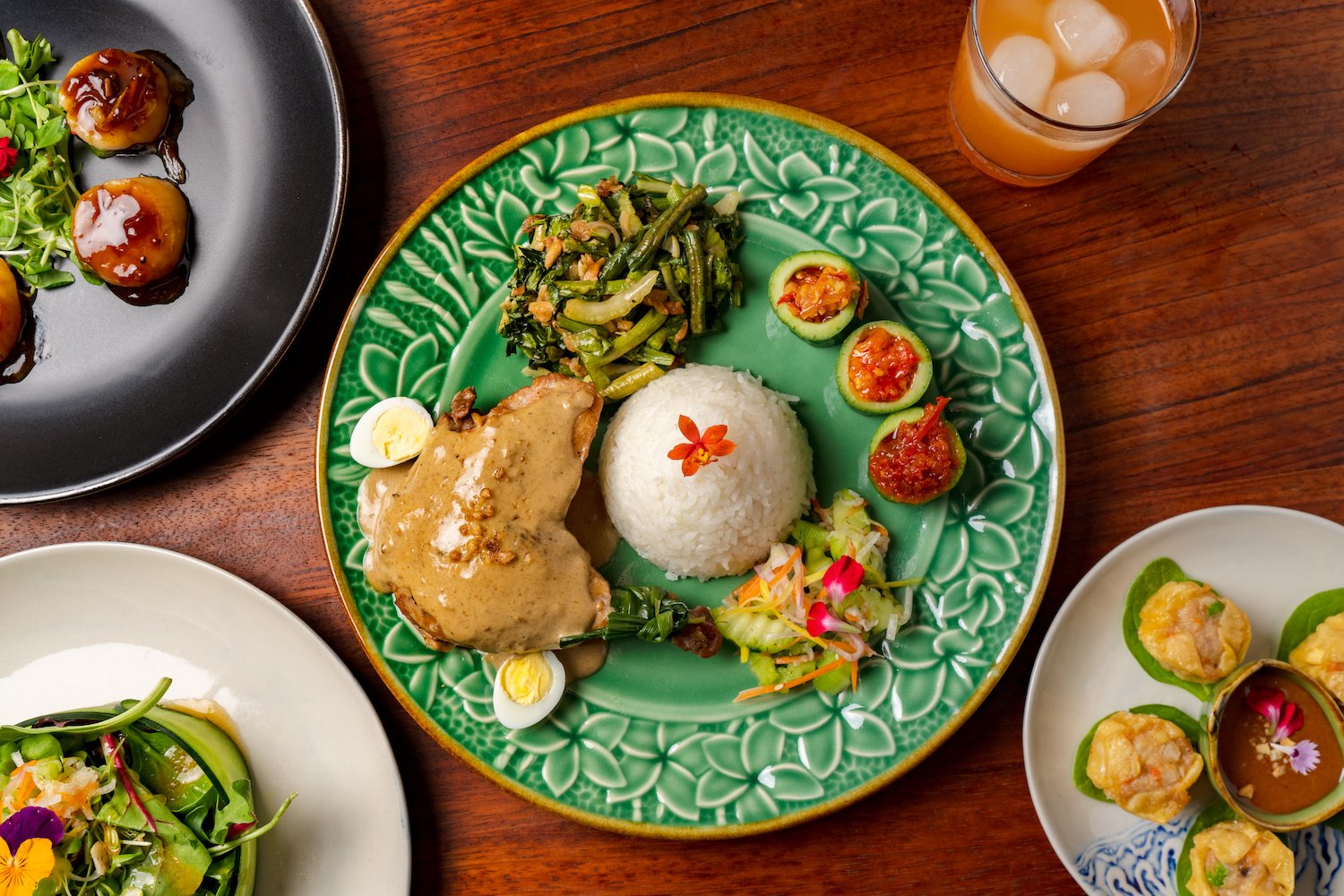If you feel lost, you’re probably on the right track. Turn left at the 7/11, resist the urge to get sassy with your GPS. Look for a woman checking her mailbox, a bike in a yard, a man working on a “project” in his garage with a serene, glossy escapism in his eyes. None of those things will help you, of course, but they are probably the most common sights in the vicinity of this restaurant. No signs are permitted, per the city or county or whichever jurisdictional body governs this kind of experience. Stay moderately alert and you’ll see the A-shaped structure towering above a side fence in this suburban Serra Mesa neighborhood.
That is it. The hut you’ll have a pretty remarkable meal in tonight.
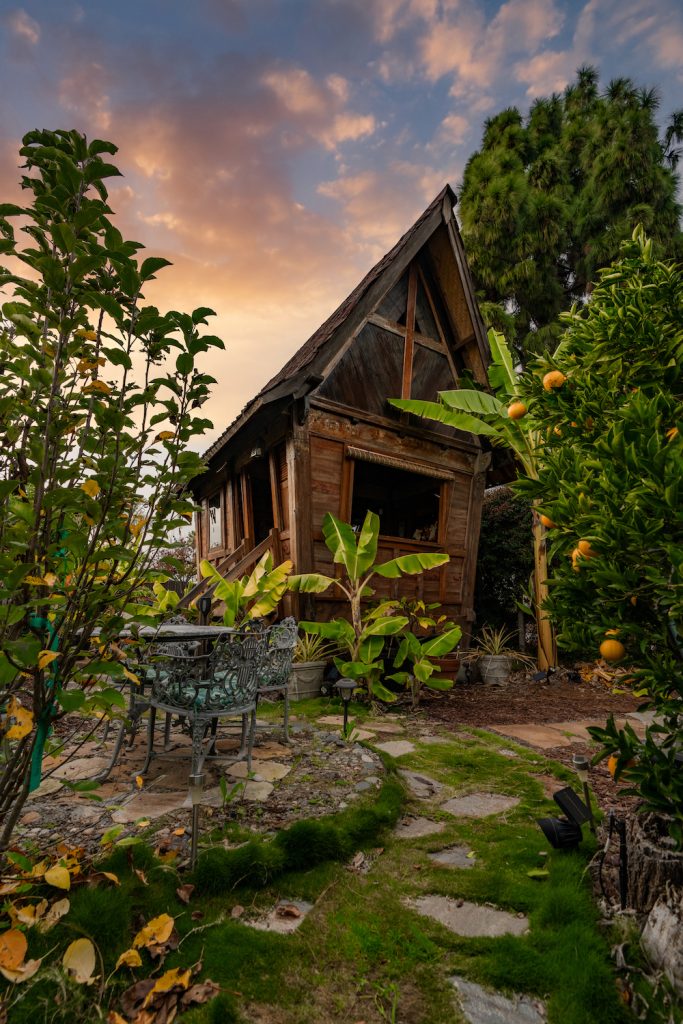
Dave Sims will meet you at the gate. He will likely be wearing something tropical, a fashion portal to his former wanderlust surf life in Indonesia, where he worked at a resort at the top of a cliff overlooking a famed surf cove. Where, he’ll tell you, the waves echoed like thunder, creating a shocking natural white noise that put traveling surfers to sleep. Where he first spotted his now-wife, Rie, an Indo native full of sass and life, outside a local bar. Where he braved a hello. And why he’s here, welcoming us to an elaborate six-course Indonesian feast inside a gigantic remodeled rice hut in their backyard.
Built in 1935, the hut floated for a month on a cargo ship across the Pacific until it landed here and became the symbol of an entirely new form of restaurant in San Diego.
Dave will show you their food plants—spiky dragonfruit (which, later, we’ll eat as a sorbet), makrut lime leaf shrub (it flavors the soup), bananas, a hopeful little coffee plant, a verdant wall of passion fruit vines that separate his grow area from their single-story home, where he and Rie live with their two boys. The home Dave grew up in.
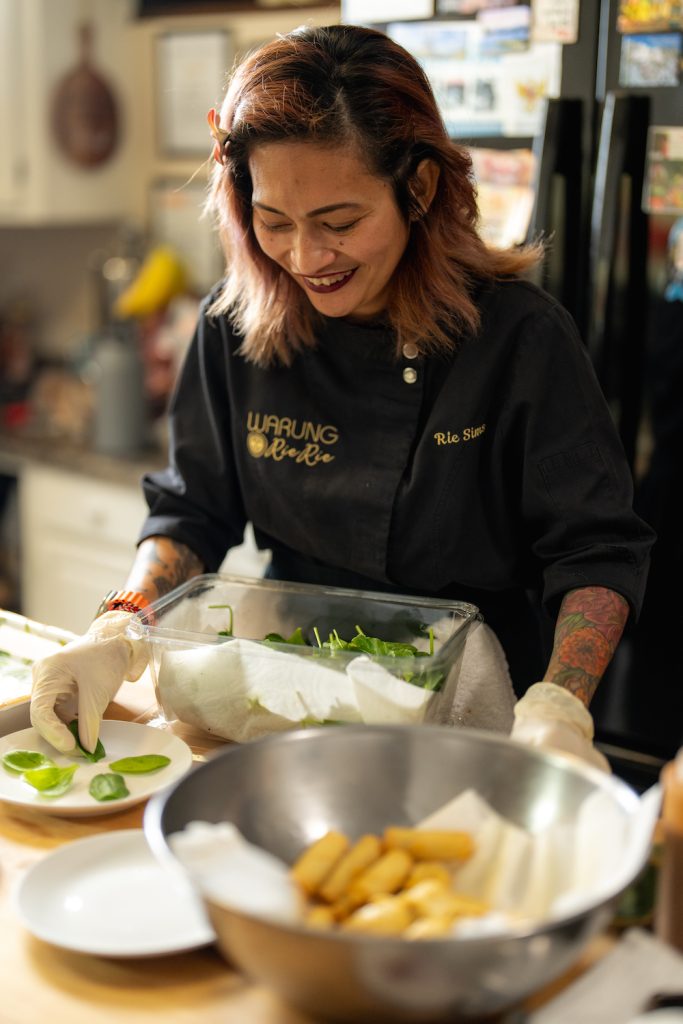
On our night there, we follow Dave through a wooden arch, past the American Ninja Warrior course he built for the kids. We weave around a stack of surfboards and mini-projects in various stages of tinkering and disarray on the back patio. Walking through a sliding glass door into the tiny kitchen, we see Rie wearing a sleeve of tattoos, a flower in her hair, and blood-red lipstick. Her smile is moon-sized and electric.
She’s putting the final touches on the elaborate, symmetrical plating of our first course: siomay ayam, dumplings filled with spiced meat with peanut sauce, a universal street snack of West Java. Behind her is a black Whirlpool fridge with Las Vegas magnets and pictures of the kids and grocery lists. If you need to use the restroom, it’s through the living room to the right. Don’t mind the toys.
This is not a Food Network kitchen. It is one measured in phone booths and modesty. And it’s where, every Thursday through Saturday night, she cooks up to a dozen six-course tasting meals that represent her native Papua and Indo culture at large, changing menus seasonally with the produce of San Diego.
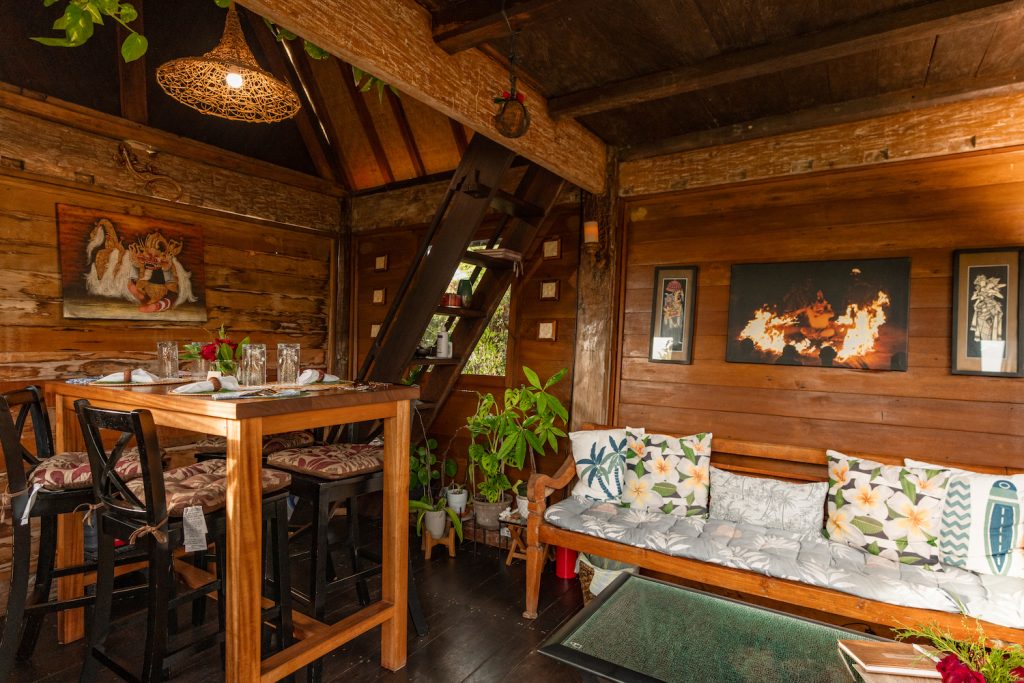
Dave escorts us back up the slope of the yard, and we enter the hut. It’s about the size of a ten-person tent, but with 20-foot ceilings and a second deck (where rice farmers would sleep, above their harvest on the bottom floor) and a wooden table that fits up to six people. He asks Siri or Alexa or one of those to play his island mix. Light tropical vibes fill the hut. It’s winter, so Dave squeezes past us, fires up a small space heater that’s attached to a propane tank, and goes off to corral the first course.
This is Warung RieRie, a fine dining restaurant in someone’s home. Or behind it. And it’s the star of San Diego’s world of MEHKOs—Micro Economic Home Kitchen Operations. Warung RieRie offers two seatings a night, Thursday through Saturday, and they are booked out for a year (their reservation software won’t allow them to book any further).
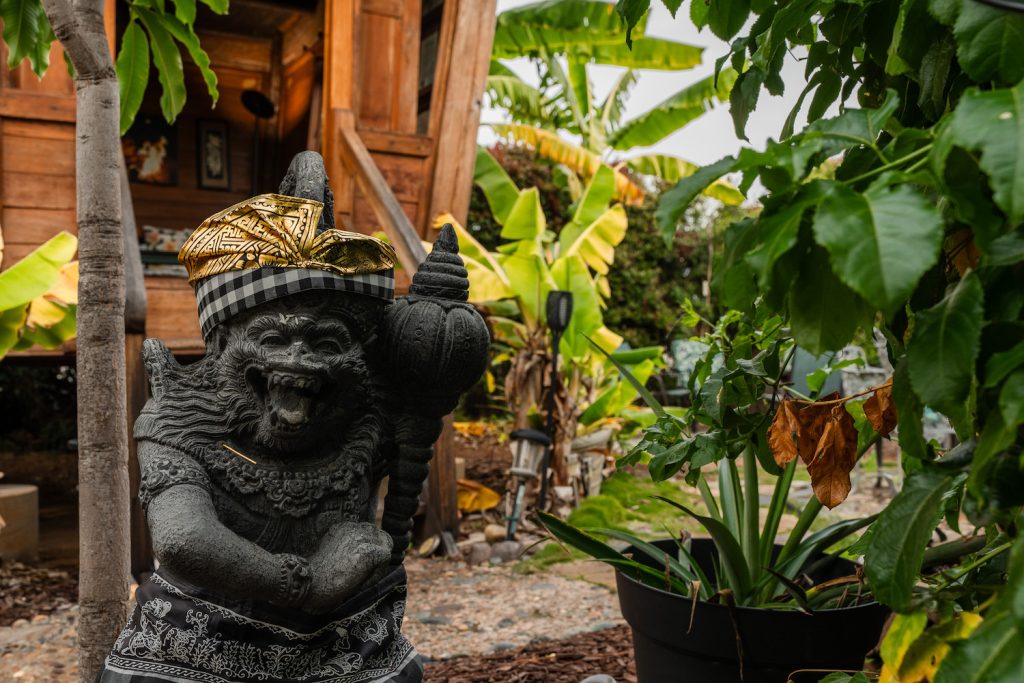
Toto, I don’t think we’re in Clairemont anymore.
For chefs like Rie, MEHKOs are a way in, or just a different way. Few people can afford to open a restaurant, which can run (at the very lowest end) tens of thousands to millions of dollars and lock dreamers into long-term leases. In 2013, California implemented the Homemade Food Act, allowing anyone to make and sell low-risk foods (granola, jam, the like) out of their homes. Hot meals were a no-go, deemed too dangerous.
But on Jan. 1, 2019, AB 626 allowed cooks in California to run restaurants out of their homes, serving all but the most notorious get-sick foods (like oysters and tartare). The new restaurants were called MEHKOs.
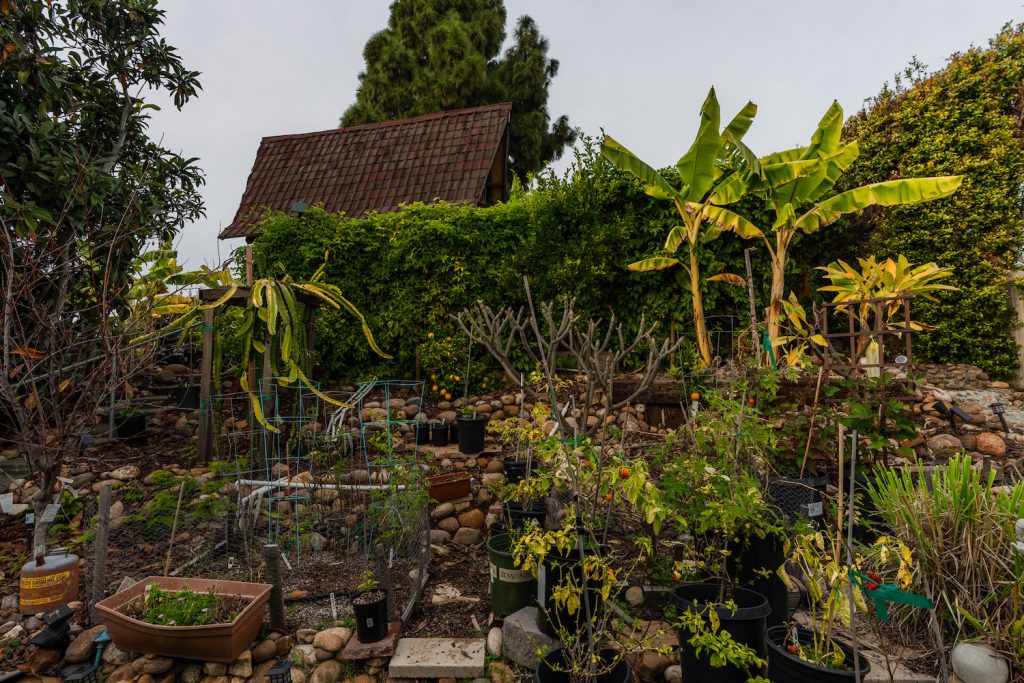
As always, laws come with parameters, catches, and more than their fair share of BS. To prevent neighborhoods from becoming restaurant rows, MEHKOs were only allowed to serve 30 meals a day and 60 per week, with no more than $50,000 in gross annual sales. That’s hardly a living, but it was a start. Before you could begin, your county had to sign off on AB 626. San Diego County gave MEHKOs the green light in 2022. The program was scheduled to sunset in 2024, but last November, the Board of Supervisors voted unanimously to not only make the program permanent, but to expand how many meals could be served (90) and how much money made ($100K). San Diego’s model for them is considered one of the best in the state.
Per the county’s analysis, the program was a wild success. None of the feared potential negative outcomes— restaurant traffic ruining neighborhoods, salmonella outbreaks, you can imagine—came to bear. And a meal at Warung RieRie is a showcase of the positive effects.
For starters, per the US census, only 25 percent of businesses in San Diego County are owned by women or minorities. Compare that to the 60-something MEHKO permits issued in San Diego: 58 percent are women-owned, and 70 percent minority-owned. The smaller scale of MEHKOs also allows restaurants to showcase food from cultures that don’t have the demand or audience of, say, Thai or Chinese.
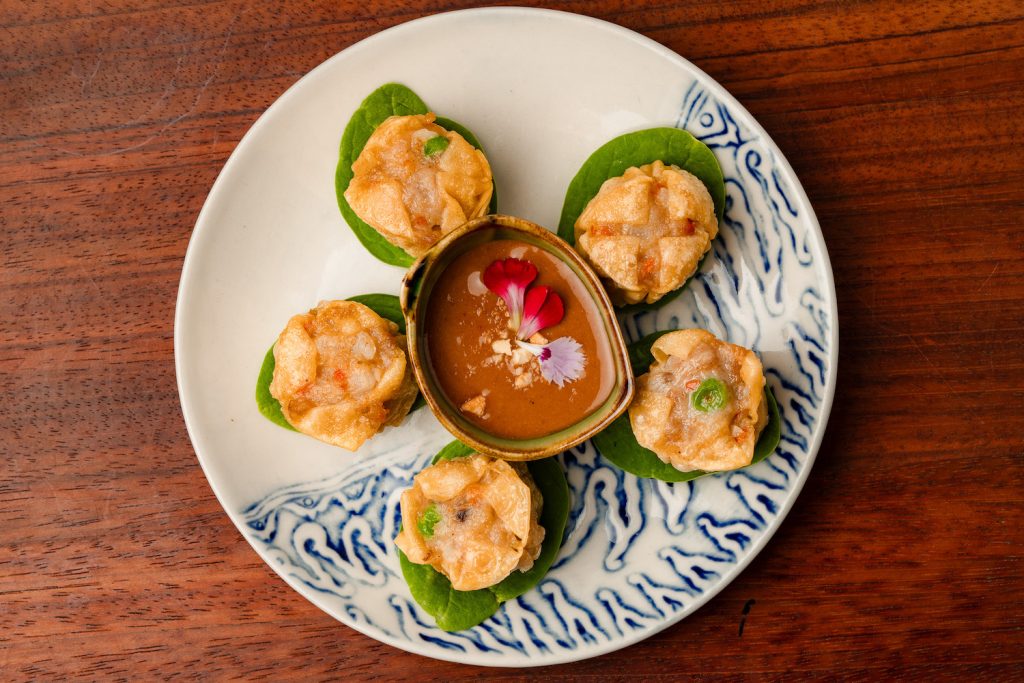
Rie was trained to cook Indonesian food by her father, and over a couple of efficient hours she sends out sayur sop (a traditional vegetable soup with coriander, garlic, and nutmeg); a green salad with ribbons of cucumbers, citrus from their backyard, and a passion fruit vinaigrette; a sextet of scallops with pea sprouts in a triple citrus sauce, her father’s recipe for a dish from the Maluku, Moluccas archipelago; and sous vide duck confit, served in a thick Indo coconut cream curry with garlic green vegetables (for which cucumbers are hollowed out to serve as vessels for three variations of homemade sambal, ranging in spice level from mild to abusive). We finish the meal with coconut-mango-dragon-fruit sorbet topped with coconut flakes and passion fruit syrup.
It’s plated beautifully. The food is good to excellent, all far exceeding expectations from that tiny kitchen. The dumplings are among the best I’ve had. The duck is incredibly tender, its sauce nearly a gravy, undeniably great. The entire room eats the sorbet as if it’s life’s final treat.
Sitting in that hut, staring out its three windows, you can barely see Clairemont. There is passion fruit out one window, palm trees out another, the night sky the other way. You feel transported.
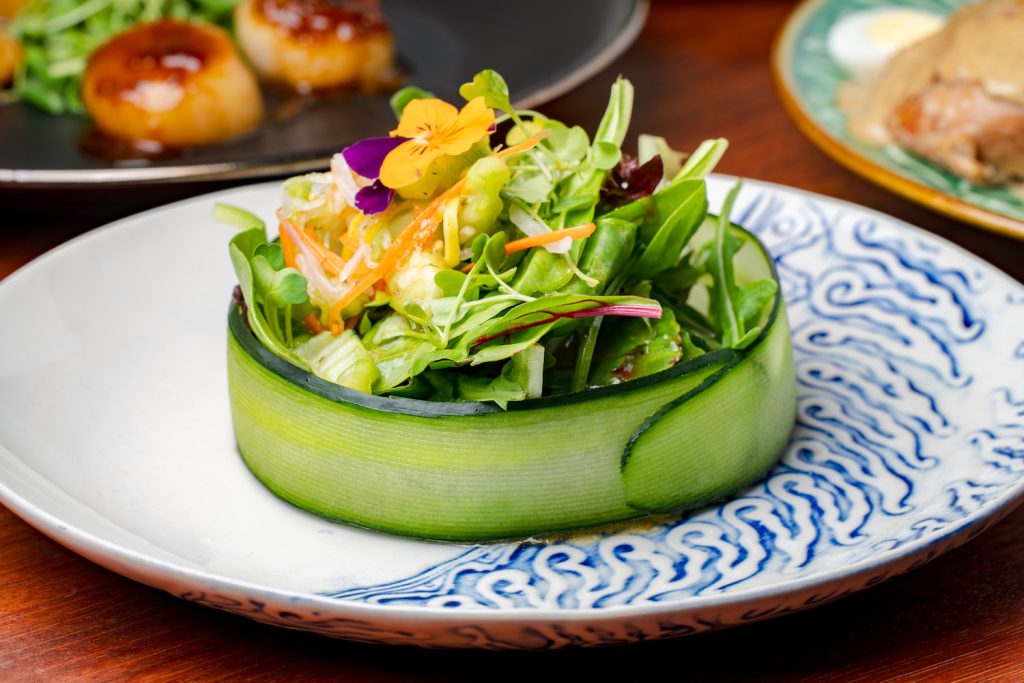
Warung RieRie is not cheap: $220 per person. For me, the food and wildly unique experience is worth it. I’ve paid more for less. There’s nothing like this in San Diego (had the food been bad or even subpar, I’d let you know, but it was rather fantastic).
The transaction of commerce is admittedly odd in this environment. Restaurants in homes are standard in many parts of the world, but not here. In the US, backyards have long been the realm of the potluck, of the polite Venmo or just a deep gratitude. But no friend of mine also serves six courses of delicious and elaborately plated Indo food in a nearly 100-year-old rice hut.
At the end of the night, I ask if it’s ever exhausting, inviting this steady stream of strangers into their home three nights a week. They love it, they say. Rie, leaning against one of the hut’s open windows with a beer in hand, explains this is how it’s done where she’s from. Warungs (homes that double as restaurants) are everywhere. Where people live and where people make a living are one and the same.

